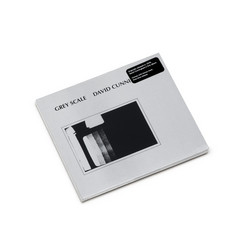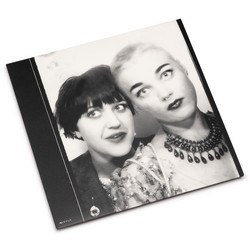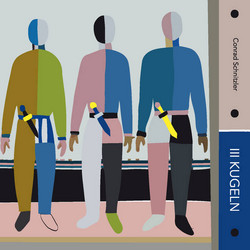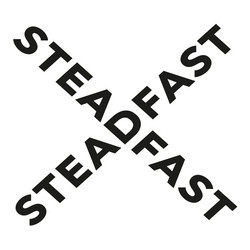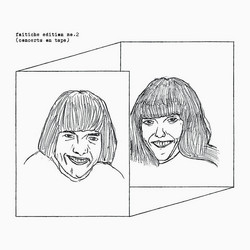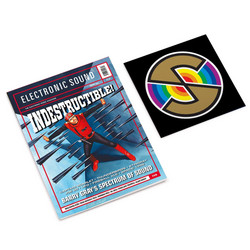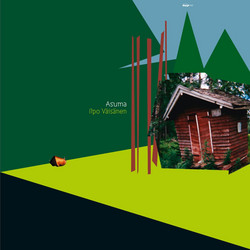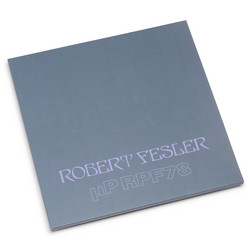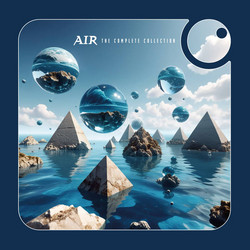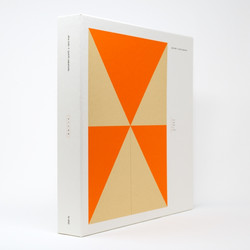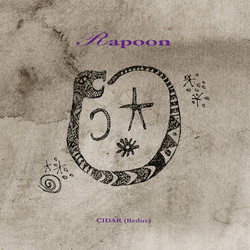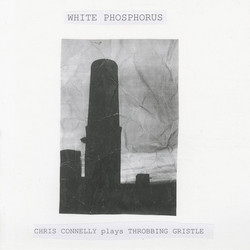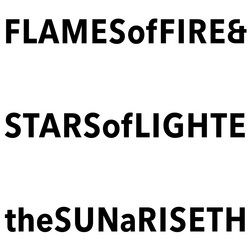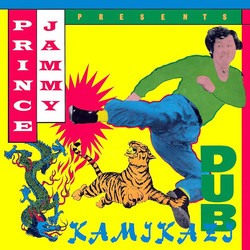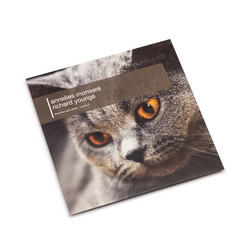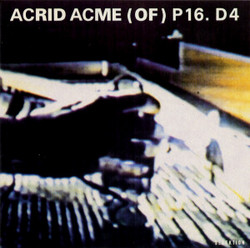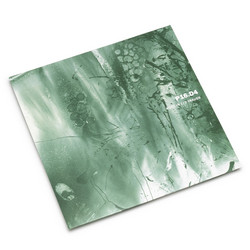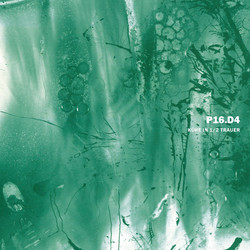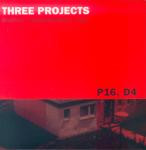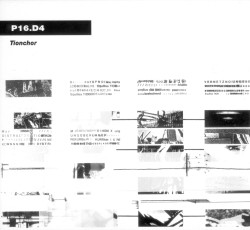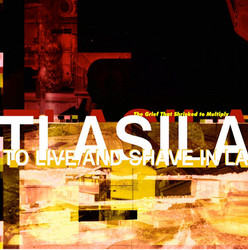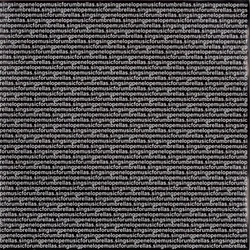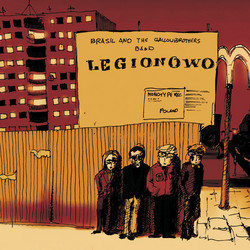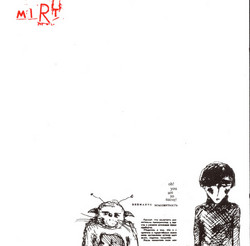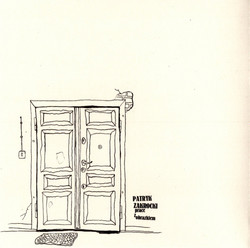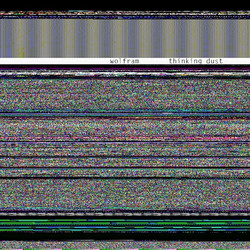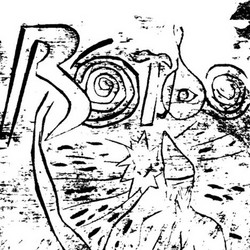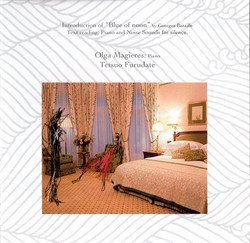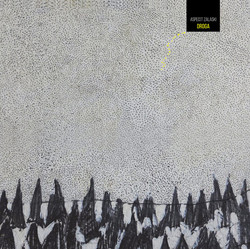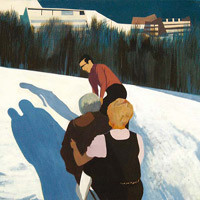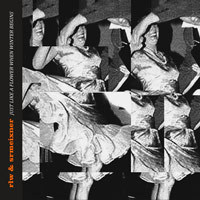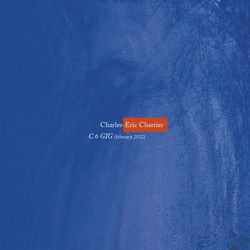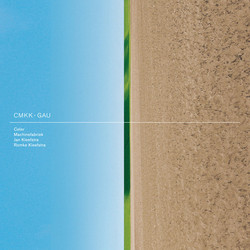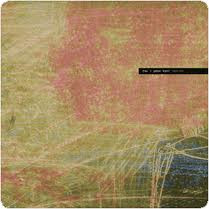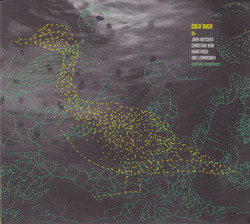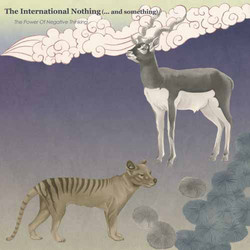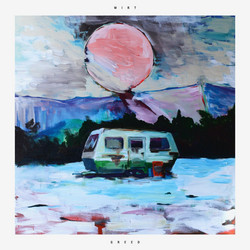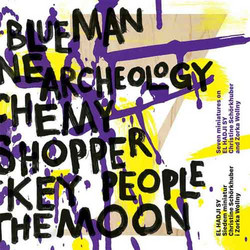1
2
Finally restocked, last copies around...Unmissable!!! Almost complete discography of P16.D4 collecting the classic recordings from 1982 til 1991 plus some unreleased recordings and a dvd of video footage never available before. "P16.D4 might not be an overly obscure name for those knowledgeable of the nascent industrial/experimental/noise scene of the early 1980s, but P16.D4 has not been as venerated as many contemporaries either. Monotype has jumped upon the opportunity to give this project the lavish retrospective release it deserves, and Passagen is just that: a deluxe six disc compilation of the band's output, with bonus tracks, and an additional DVD of mostly unseen videos and performance recordings.
Initially springing up alongside the Neue Deutsche Welle scene as an avant punk project, the band then known as PD split apart into two factions, P16.D4 and Permutative Distortion, both sharing member Ralf Wehowsky. While the latter was short lived, the former evolved into the abstract, surrealist, and occasionally terrifying organism captured in this set.
The earliest material here, the Kühe In 1/2 Trauer album culled from material recorded between 1980 and 1983, still shows some vestiges of the more conventional infant incarnation, such as the pulsing synths and crashing percussion of "Paris, Morgue" and the horror film piano passages of "Hammer/Zange/Hebel," both of which make for tense, uncomfortable moods. Perhaps even more overt is the ramshackle, yet rhythmic crashes of "Dumpfes Beleitgeful" and the bonus compilation track "Halbmensch," which mixes lurching bass guitar with scattershot tape collages.
Distruct, from 1985, further removed the trappings of conventional music by being the product of raw materials from respected artists across the world, including the likes of Nurse With Wound, The Haters, and Merzbow, among many others, mangled and mixed by Wehowsky with recordings made by P16.D4. Far predating the current collaborative culture afforded by artists using the Internet, the resulting album is both quite diverse in sound, yet consistent in approach due to Wehowsky's deliberate mixing and processing. "Kultstudien Zu Anselm Weinberg" is mostly junk percussion fused with the sound of guitars being slowly pulled out of tune, while horns and indiscernible reed instruments rise up amid the chaos of "Aufmarsch, Heimlich", resulting in what vaguely free jazz take on early Einstürzende Neubauten.
On Nichts Niemand Nirgends Nie, a double LP collaboration with Achim Wollscheid's S.B.O.T.H.I. project, involved the two artists working and reworking each other's material into their own While only the P16.D4 material is included in this set, it shows a more pronounced drift into the realms of electronics and tape cut-ups, from the jackhammer edits and weird synthetic outbursts of "I=:-I/*I-;-I I:"/"I", which predate the likes of Aphex Twin and Autechre both in sound and confusing naming conventions by a number of years, to the uncomfortable silences and shrill, tortured electronics of "Neger Am Laster." Perhaps most revelatory is the inclusion of the unreleased live performance, "Ephemeral March of the Dead Monks," a combination of pre-recorded tapes and live electronics recorded using some of the same source material as the album but recorded in 1991 results an ghostly, raw wall of noise that just oozes menace.
While P16.D4 was consistently releasing albums during this period, the entity was quite prolific in appearances on a number of international compilation projects, previously compiled as Tionchor and presented here with additional unreleased material. For this reason the tracks often sound quite different from one another, retracing their disillusionment with traditional music conventions. "Inkubationskreise" and "Burgerliche Illusionen" stand out as being a throwback to the earlier, more rhythmic works, the former via an overdriven rhythmic throb obscured by noise, while the latter's cheap drum machine loops and erratic electronic outbursts embrace both music and dissonance.
The acRID acME [of] P16.D4 might be the most well known work, no doubt due to the unique approach taken for the first segment: in 1987, the P16.D4 dredged recordings from the 1981 punk incarnation and placed them in a completely different context. As a result, "Maba 4. 12." and "Rotting Outscratched" reveal their initial forms, the former with the occasionally perceptible fragment of punk thrash sipping out unscathed from the abused tapes, and the latter allowing a hint of percussion to appear here and there. Taking a different approach, "Half Cut Cows" and "Interfaces" are the products of live improvisations rather than studio techniques, resulting in a blueprint of what would be called glitch a decade later. Finally, the disc is rounded out by the Merzbow collaboration "Zur Genese Der Halbbildung," which seems like the entirely of the preceding material scrambled and reassembled in a 20 tape minute collage.
The final disc of audio material, Three Projects, is culled from recording sessions in 1987, but released at different points up until 1990. The first of the projects included is a series of unreleased material at the time, from the erratic percussive bits of "LLL/RRR" and the slowly building and collapsing framework of "Am Trafo," which, despite its cut-up nature, comes together as a well structured composition. The Captured Music tracks — featuring raw material from the likes of Asmus Tietchens, The Halfer Trio, and Psychic TV — results in a more disconnected, industrial detachment in comparison to the otherwise more abstract Dadaist material that preceded it. Finally, the Merzbow collaboration Fifty (including the previously unreleased "V4") rounds out the disc with skittering tape collages and subtle jazz elements, a sound Masami Akita would eventually return to much more aggressively.
The DVD includes a selection of nine films projected during the aforementioned performance at the 1987 Captured Music Festival, comprised of both studio footage and the more avant garde visual collages. I personally found the studio recordings the most compelling, capturing the unconventional ways in which sound was collected (electric shavers placed on piano strings to just bashing random junk with hatchets amidst a jungle of microphones). Unfortunately, the original audio from the films was in too poor of shape to reproduce, resulting in Wehowsky supplying contemporaneous materials from the archives. Never does it seem that the visuals and sounds are at odds with each other, but the original audio would have been best for historical reasons.
The other half of the DVD is comprised of four films created by Markus Caspers for an unrealized, posthumous video project. Of these, "Luxus & Mehrwert" and a live studio improvisation from 1987 perfectly encapsulate the era and the project. The former is an out of focus surrealist collage of what appears to be the band, occasionally presenting staged violence or what may be performance. It is fascinating yet unsettling in its ambiguity. The other captures the band in a practice using every single object around, from actual instruments to the ductwork to junk items as a means of producing sound. The closing hysterical screaming, however, sits squarely in that uncomfortable space between comical and disturbing, and I am still not sure which one of those it is ultimately. Which makes for a perfect metaphor for the audio that made up the oerve: at times frightening and oppressive, other times absurd and almost whimsical, sometimes all within the span of a few minutes.
Additionally, an extensive booklet is included featuring more academic, historical texts about Wehowsky from Dan Warburton, and a very personal, heartfelt piece from what might be the band's biggest fan, Howard Stelzer, in discussing his first encounter with acRID acME and the subsequent influence it had on his own artistic career. Archival photos, a discography, and reproduced flyers and record reviews fill out the exact type of supplemental information that should be included in a set such as this.
I have to reference a part of Stelzer's text where he says how he envies people who are hearing P16.D4 for the first time, because other than hearing a bit of acRID acME myself, I was not all that familiar with their actual recordings. I have heard a good amount of Wehowsky's subsequent solo work as RLW so I had an inkling of what to expect coming into this, but the result was still rather surprising and full of unexpected twists and turns. Even with a familiarity of this kind of difficult music, many of these tracks changed directions or went off on sonic tangents that I would have not expected, and that gleefully perverse way of bouncing between oppressive noise and light hearted improvisation comes across perfectly. There are no negatives to this collection, in content or presentation, and not only should the label be greatly commended for their hard work in compiling it, but also making it an attainable document, rather than an overpriced art edition that has limited appeal. (Brainwashed)
Initially springing up alongside the Neue Deutsche Welle scene as an avant punk project, the band then known as PD split apart into two factions, P16.D4 and Permutative Distortion, both sharing member Ralf Wehowsky. While the latter was short lived, the former evolved into the abstract, surrealist, and occasionally terrifying organism captured in this set.
The earliest material here, the Kühe In 1/2 Trauer album culled from material recorded between 1980 and 1983, still shows some vestiges of the more conventional infant incarnation, such as the pulsing synths and crashing percussion of "Paris, Morgue" and the horror film piano passages of "Hammer/Zange/Hebel," both of which make for tense, uncomfortable moods. Perhaps even more overt is the ramshackle, yet rhythmic crashes of "Dumpfes Beleitgeful" and the bonus compilation track "Halbmensch," which mixes lurching bass guitar with scattershot tape collages.
Distruct, from 1985, further removed the trappings of conventional music by being the product of raw materials from respected artists across the world, including the likes of Nurse With Wound, The Haters, and Merzbow, among many others, mangled and mixed by Wehowsky with recordings made by P16.D4. Far predating the current collaborative culture afforded by artists using the Internet, the resulting album is both quite diverse in sound, yet consistent in approach due to Wehowsky's deliberate mixing and processing. "Kultstudien Zu Anselm Weinberg" is mostly junk percussion fused with the sound of guitars being slowly pulled out of tune, while horns and indiscernible reed instruments rise up amid the chaos of "Aufmarsch, Heimlich", resulting in what vaguely free jazz take on early Einstürzende Neubauten.
On Nichts Niemand Nirgends Nie, a double LP collaboration with Achim Wollscheid's S.B.O.T.H.I. project, involved the two artists working and reworking each other's material into their own While only the P16.D4 material is included in this set, it shows a more pronounced drift into the realms of electronics and tape cut-ups, from the jackhammer edits and weird synthetic outbursts of "I=:-I/*I-;-I I:"/"I", which predate the likes of Aphex Twin and Autechre both in sound and confusing naming conventions by a number of years, to the uncomfortable silences and shrill, tortured electronics of "Neger Am Laster." Perhaps most revelatory is the inclusion of the unreleased live performance, "Ephemeral March of the Dead Monks," a combination of pre-recorded tapes and live electronics recorded using some of the same source material as the album but recorded in 1991 results an ghostly, raw wall of noise that just oozes menace.
While P16.D4 was consistently releasing albums during this period, the entity was quite prolific in appearances on a number of international compilation projects, previously compiled as Tionchor and presented here with additional unreleased material. For this reason the tracks often sound quite different from one another, retracing their disillusionment with traditional music conventions. "Inkubationskreise" and "Burgerliche Illusionen" stand out as being a throwback to the earlier, more rhythmic works, the former via an overdriven rhythmic throb obscured by noise, while the latter's cheap drum machine loops and erratic electronic outbursts embrace both music and dissonance.
The acRID acME [of] P16.D4 might be the most well known work, no doubt due to the unique approach taken for the first segment: in 1987, the P16.D4 dredged recordings from the 1981 punk incarnation and placed them in a completely different context. As a result, "Maba 4. 12." and "Rotting Outscratched" reveal their initial forms, the former with the occasionally perceptible fragment of punk thrash sipping out unscathed from the abused tapes, and the latter allowing a hint of percussion to appear here and there. Taking a different approach, "Half Cut Cows" and "Interfaces" are the products of live improvisations rather than studio techniques, resulting in a blueprint of what would be called glitch a decade later. Finally, the disc is rounded out by the Merzbow collaboration "Zur Genese Der Halbbildung," which seems like the entirely of the preceding material scrambled and reassembled in a 20 tape minute collage.
The final disc of audio material, Three Projects, is culled from recording sessions in 1987, but released at different points up until 1990. The first of the projects included is a series of unreleased material at the time, from the erratic percussive bits of "LLL/RRR" and the slowly building and collapsing framework of "Am Trafo," which, despite its cut-up nature, comes together as a well structured composition. The Captured Music tracks — featuring raw material from the likes of Asmus Tietchens, The Halfer Trio, and Psychic TV — results in a more disconnected, industrial detachment in comparison to the otherwise more abstract Dadaist material that preceded it. Finally, the Merzbow collaboration Fifty (including the previously unreleased "V4") rounds out the disc with skittering tape collages and subtle jazz elements, a sound Masami Akita would eventually return to much more aggressively.
The DVD includes a selection of nine films projected during the aforementioned performance at the 1987 Captured Music Festival, comprised of both studio footage and the more avant garde visual collages. I personally found the studio recordings the most compelling, capturing the unconventional ways in which sound was collected (electric shavers placed on piano strings to just bashing random junk with hatchets amidst a jungle of microphones). Unfortunately, the original audio from the films was in too poor of shape to reproduce, resulting in Wehowsky supplying contemporaneous materials from the archives. Never does it seem that the visuals and sounds are at odds with each other, but the original audio would have been best for historical reasons.
The other half of the DVD is comprised of four films created by Markus Caspers for an unrealized, posthumous video project. Of these, "Luxus & Mehrwert" and a live studio improvisation from 1987 perfectly encapsulate the era and the project. The former is an out of focus surrealist collage of what appears to be the band, occasionally presenting staged violence or what may be performance. It is fascinating yet unsettling in its ambiguity. The other captures the band in a practice using every single object around, from actual instruments to the ductwork to junk items as a means of producing sound. The closing hysterical screaming, however, sits squarely in that uncomfortable space between comical and disturbing, and I am still not sure which one of those it is ultimately. Which makes for a perfect metaphor for the audio that made up the oerve: at times frightening and oppressive, other times absurd and almost whimsical, sometimes all within the span of a few minutes.
Additionally, an extensive booklet is included featuring more academic, historical texts about Wehowsky from Dan Warburton, and a very personal, heartfelt piece from what might be the band's biggest fan, Howard Stelzer, in discussing his first encounter with acRID acME and the subsequent influence it had on his own artistic career. Archival photos, a discography, and reproduced flyers and record reviews fill out the exact type of supplemental information that should be included in a set such as this.
I have to reference a part of Stelzer's text where he says how he envies people who are hearing P16.D4 for the first time, because other than hearing a bit of acRID acME myself, I was not all that familiar with their actual recordings. I have heard a good amount of Wehowsky's subsequent solo work as RLW so I had an inkling of what to expect coming into this, but the result was still rather surprising and full of unexpected twists and turns. Even with a familiarity of this kind of difficult music, many of these tracks changed directions or went off on sonic tangents that I would have not expected, and that gleefully perverse way of bouncing between oppressive noise and light hearted improvisation comes across perfectly. There are no negatives to this collection, in content or presentation, and not only should the label be greatly commended for their hard work in compiling it, but also making it an attainable document, rather than an overpriced art edition that has limited appeal. (Brainwashed)
Details
Cat. number: mono060CD
Year: 2012
Notes:
Deluxe box, 6CD + DVD + 48-page booklet + 4 postcards +2 buttons each disc in separate ecopack sleeve - all collected in 30.5 x 14.5 x 2.5 cm box
